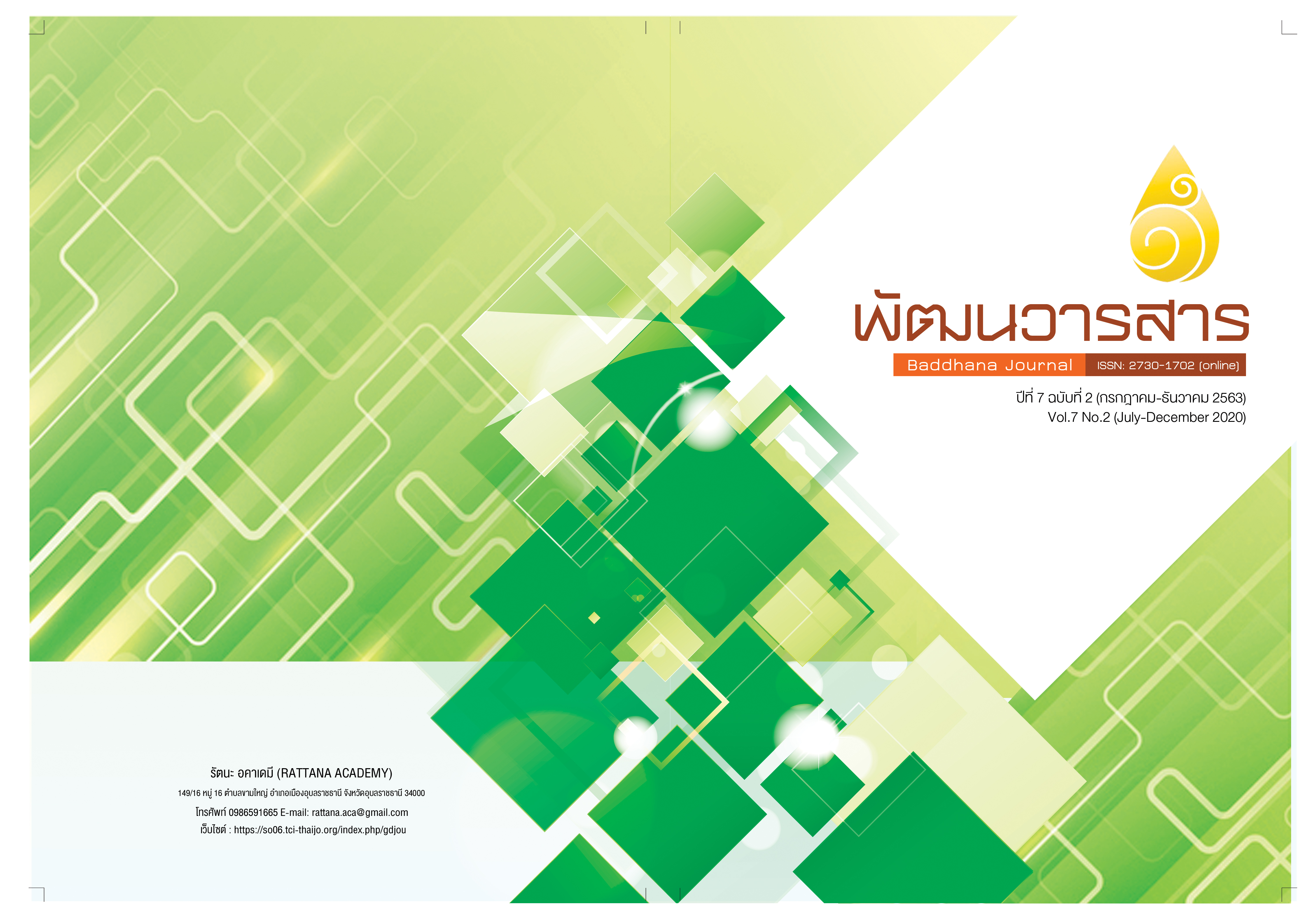Art of Creating Sustainable Happiness
Main Article Content
Abstract
Everyone pursuits happiness in life based on his perception and situational evaluation. The aim of this qualitative research was to explore happiness in varied dimensions. This study indicates that there were 2 main components of happiness. They were an external factor (body) and an internal factor (mind). Additionally, it shows that the better way to pursuit happiness began within person’s self by enhancing 4 components of well-being which were congruent with the principles of Buddhism. They consisted of physical well-being (physical development), psychological well-being (psychological development), wisdom well-being (wisdom development) and social well-being (moral development). These components would be beneficial to a person’s life and lead to the sustainable happiness in his family, community and society after all.
Article Details
References
กรุงเทพฯ: กระทรวงสาธารณสุข.
เกสร มุ้ยจีน. (2559). การสร้างความสุขด้วยจิตวิทยาเชิงบวก, วารสาร
วิทยาศาสตร์และเทคโนโลยี.กรุงเทพฯ : มหาวิทยาลัยธรรมศาสตร์
ชะอรสิน สุขศรีวงศ์. (2551). กลยุทธ์คลายเครียด.. กรุงเทพฯ : คณะเภสัช
ศาสตร์ มหาวิทยาลัยมหิดล.
ติช นัท ฮันห์. (2556). เวลานี้ที่เป็นสุข. แปลโดย นิรามิสาและสังฆสวนธรรม.
กรุงเทพฯ : มูลนิธิหมู่บ้านพลัม.
ป.ประภัสสร. (2542). คู่มือดับทุกข์ ทุกข์มีไว้แก้ มิได้มีไว้กลุ้ม. กรุงเทพฯ :
สร้อยทอง.
ประเวศ วะสี. (2541). บนเส้นทางใหม่การส่งเสริมสุขภาพ : อภิวัตน์ชีวิตและ
สังคม, พิมพ์ครั้งที่ 2.กรุงเทพฯ : สำนักพิมพ์หมอชาวบ้าน.
ประเวศ วะสี.(2550). มรรค 12 สู่ประเทศไทยอยู่เย็นเป็นสุข. นนทบุรี:
สำนักงานปฏิรูประบบสาธารณสุขแห่งชาติ.
พระธรรมโกศาจารย์ (พุทธทาสภิกขุ). (2545). ธรรมบรรยายพิเศษในสวน
โมกข์ : เหนือวิทยาศาสตร์ อานาปานสติภาวนา. กรุงเทพฯ : ธรรมสภา.
พระธรรมปิฎก (ป.อ.ปยุตโต) (2550). พระพุทธศาสนาพัฒนาคนและสังคม.
พิมพ์ครั้งที่3. กรุงเทพฯ : โรงพิมพ์การศาสนา.
พระไพศาล วิสาโล. (2560). พบสุขที่ใจ. กรุงเทพฯ : เครือข่ายพุทธิกา.
สมัชชาสุขภาพแห่งชาติ. (2548). สมัชชาสุขภาพแห่งชาติ ว่าด้วยความอยู่
เย็นเป็นสุข. กรุงเทพฯ : สํานักงานปฏิรูประบบสุขภาพแห่งชาติ.
สัญญา สัญญาวิวัฒน์. (2543). ทฤษฎีและกลยุทธ์การพัฒนาสังคม. พิมพ์ครั้งที่
3. กรุงเทพฯ : จุฬาลงกรณ์มหาวิทยาลัย.
สุภาณี สุขะนาคินทร์. (2549). ปัจจัยที่ 4 มีความสัมพันธ์กับความสุขของ
ประชาชน อำเภอท่าปลา จังหวัดอุตรดิตถ์. วิทยานิพนธ์ศิลปะศาสตร
มหาบัณฑิต (การวิจัยและพัฒนาท้องถิ่น) บัณฑิตวิทยาลัย
มหาวิทยาลัยราชภัฏอุตรดิตถ์.
สำนักงานสถิติแห่งชาติ. (2559). การสำรวจสุขภาพจิต (ความสุข) คนไทย
พ.ศ. 2558. กรุงเทพฯ : กระทรวงเทคโนโลยีสารสนเทศและการสื่อสาร.
Anna, Alexandrova. (2005). Subjective Well-Being and
Kahneman’s Objective Happiness.
Journal of Happiness Studies. 6 (2) : 301 - 324.
Dupuy, H. J. (1977). The general well-being schedule. In F. McDowell & C. Newell (Eds.), Measuring health: A guide to rating scales and questionnaires . New York: Oxford University Press.
Frey, B. S. (2008). Happiness : a revolution in economics. MIT
Press.
Kahneman, D. & Krueger, A.B. (2006). Developments in the
measurement of subjective well-being. The Journal of
Economic Perspectives, 20, 3-24.
Layard, R. (2005). Happiness: Lessons from a New Science.
New York: The Penguin Press.
Orem, D. E. (1991). Nursing : Concepts of Practice (4 th ed.).
St. Louis: Mosby.
Veenhoven, R. (1996). Happy life-expectancy: A comprehensive
measure of quality-of-life in nations. Soc. Indicat.Res.
39: 1-58.


